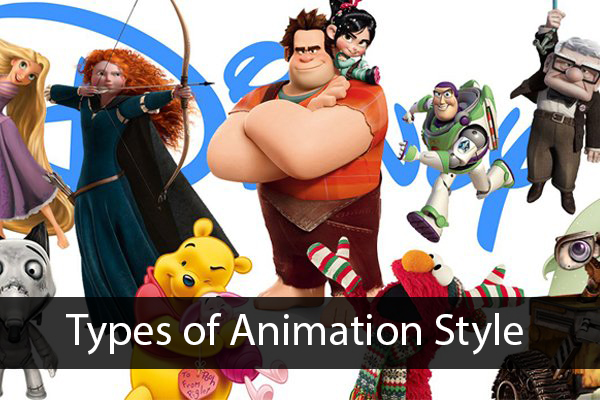
There are various animation styles used in the world of animation, each with its own unique characteristics and techniques.
Here are some of the Different Types of Animation Styles:
Traditional (2D) Animation: This style involves hand-drawing or digitally creating individual frames to produce the illusion of motion. It includes techniques like cel animation and frame-by-frame animation.
Computer-Generated Imagery (CGI): CGI animation uses computer-generated graphics and 3D models to create lifelike characters, scenes, and special effects. It's used in both realistic and stylized forms.
Stop-Motion Animation: Stop-motion involves manipulating real-world objects, puppets, or clay figures frame by frame to create the illusion of movement. Styles within stop-motion include Claymation, puppet animation, and cut-out animation.
Cut-Out Animation: This style uses 2D characters and objects cut from paper, fabric, or other materials. These elements are then manipulated to create animation. It's often seen in educational and children's programming.
Claymation: Claymation is a type of stop-motion animation where characters and scenes are built using clay or plasticine. This style has a tactile and unique look, as seen in the works of Aardman Animations.
Pixilation: Pixilation is a stop-motion technique that uses live actors instead of puppets or objects. The actors are posed and filmed frame by frame to create unusual and surreal movements.
Hand-Drawn Animation: While often associated with traditional animation, hand-drawn animation can also be used in a more experimental or artistic context, creating visually stunning and unique styles.
Rotoscoping: Rotoscoping involves tracing over live-action footage frame by frame to create an animated version. It's used for a mix of realistic and surreal visual effects.
Vector Animation: Vector animation uses mathematical formulas to create smooth, scalable, and often geometrically precise animations. It's frequently used for web animations and interactive media.
Motion Graphics: Motion graphics involve animating typography, shapes, and abstract design elements to convey information or create visual effects. It's common in advertising, explainer videos, and title sequences.
Experimental Animation: Experimental animation often pushes the boundaries of traditional animation techniques to create avant-garde and abstract visuals. Artists in this style explore innovative and unconventional approaches to animation.
Anime: Anime is a distinctive style of animation originating from Japan, characterized by its colorful artwork, fantastical themes, and often exaggerated facial expressions and action sequences.
Cutout Animation: Cutout animation uses pre-cut 2D characters and objects, often made from paper or other materials, to create animation. It combines elements of puppetry and 2D animation.
Hybrid Animation: Hybrid animation blends different styles and techniques, combining 2D and 3D animation or mixing live-action with animated elements. This style can lead to visually striking and imaginative results.
These animation styles are not mutually exclusive and can be combined or adapted to create unique and visually compelling animations for various purposes, from entertainment to education to advertising.
Thank You